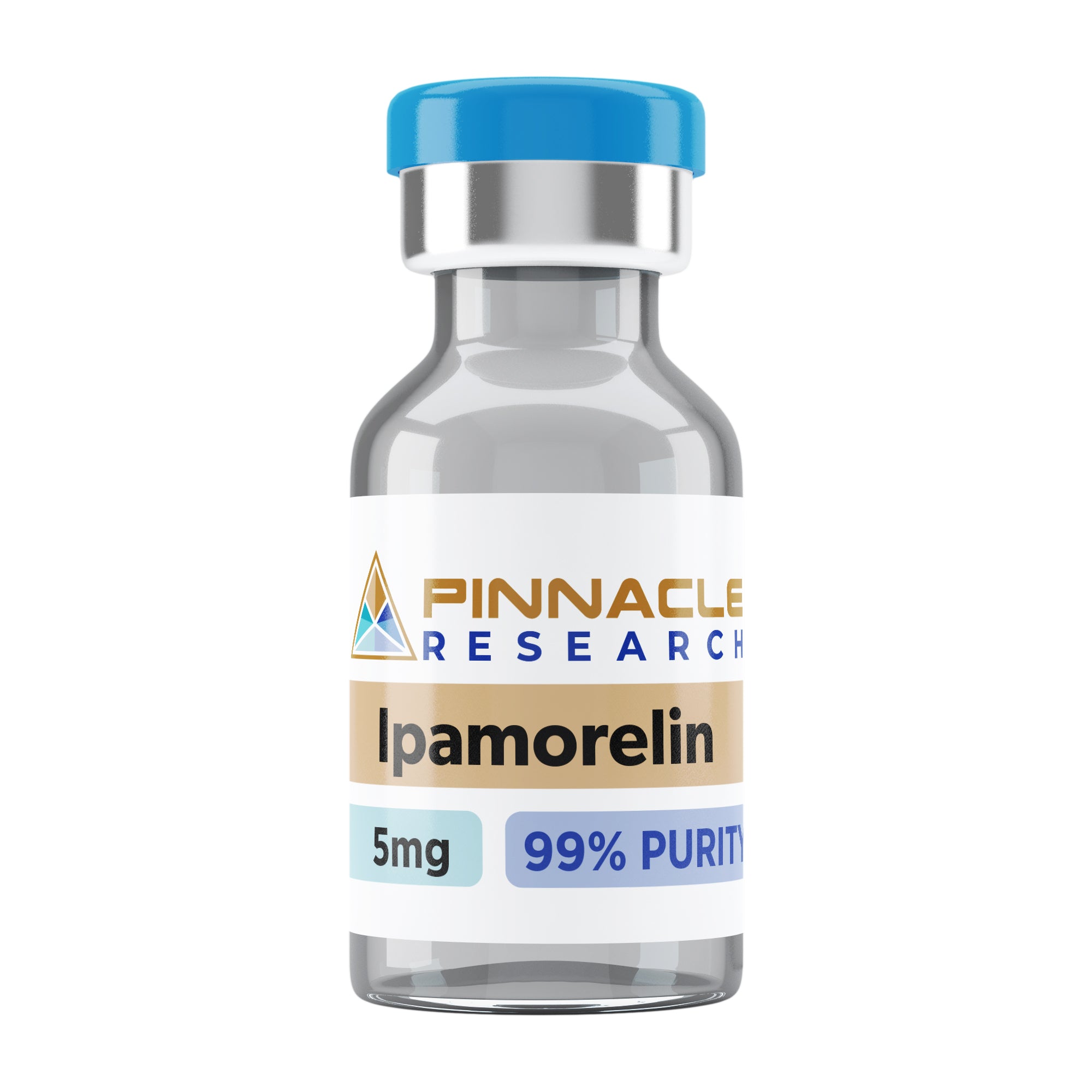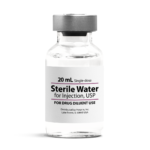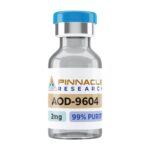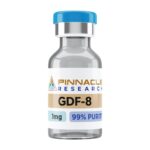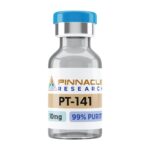About Ipamorelin
The Ipamorelin polypeptide has five amino acids in its structure, and it’s referred to as a pentapeptide. The pentapeptide is an antagonist and GH secretagogue. Therefore it has specific binding capabilities, where it binds itself to specific receptors provoking different cellular responses. Its unique operational mechanics enables it to stimulate the secretion of growth-related hormones by the pituitary glands. Additionally, the presence of the Ipamorelin pentapeptide inhibits the secretion of somatostatin. Research studies show the capability of pentapeptide to repair skeletal tissues and muscles and trigger muscle growth.
What Is Ipamorelin?
Despite being a pentapeptide, the Ipamorelin peptide has a short peptide sequence. It effectively binds to the growth hormone secretagogue receptor (ghrelin). Ipamorelin is categorized as one of the most selective GH (growth hormones) secretagogues, and scientific studies show that it does not affect the following:
- ACTH
- Luteinizing hormone,
- Prolactin,
- Thyroid-stimulating hormone
- Follicle-stimulating hormone,
- Cortisol release
Thanks to a high level of specificity during its binding process, Ipamorelin has gained significant interest among doctors and researchers. They are using the peptide as a model in uncovering and understanding how selective binding of receptors is achieved.
Ipamorelin Chemical Structure
- Peptide Sequence: Aib-His-D-2Nal-D-Phe-Lys
- Molecular Formula: C38H49N9O5
- Molecular Weight: 711.868 g/mol
Ipamorelin Research and Effects
Negative Corticosteroid Effects
Glucocorticoid medications fall in the corticosteroid drug category and are generally used to treat inflammation in various health conditions, from autoimmune disease to cancer. Unfortunately, glucocorticoids have many side effects that limit their usefulness during treatment. Researchers believe that mitigating the glucocorticoid side effects could allow for higher drug dosing and prolonged drug usage without fear of the side effects. Research studies suggest that prolonged glucocorticoid medication, minus its side effects, can lead to enhanced mortality and morbidity. Several clinical studies have revealed that Ipamorelin pentapeptide can reduce. In some instances, it can even reverse the side effects caused by the usage of glucocorticoids.
Bone Health
The use of glucocorticoids for prolonged or higher dosages has been associated with several side effects. One of the most popular side effects associated with the medication is the loss of bone density which puts one at higher risk of suffering from frequent fractures. The current treatment therapies being used to prevent this side effect are:
- Bisphosphonates
- New monoclonal antibodies.
- Hormone therapies
The situation gets more complicated because the above three treatments have their subsequent side effects, are costly, and have limited efficacy. Additionally, it’s tough to produce a super-efficient treatment with zero side effects.
Research studies on rats show that Ipamorelin can prevent bone loss thanks to corticosteroids. Rats exposed to the peptide also experienced a four times increase in bone formation. During further studies of Ipamorelin and its effects on bone health, scientists discovered that the compound also increased bone mineral density. Thus increasing the strength of old and new bones. Another bonus feature of Ipamorelin was that it could offset some side effects triggered by steroids, like enhanced visceral fat deposition and muscle wasting.
Muscle Growth
Scientific evidence suggests that the growth hormone secretagogues and GH can prevent and reduce the catabolic effects on the muscles caused by glucocorticoids. During a research study, rats administered glucocorticoid compounds experienced nitrogen wasting reduction in the liver. But after administration of the Ipamorelin, the rats experienced improved nitrogen balance. One of the most common side effects of glucocorticoids is muscle wasting, one of the drug’s top treatment-limiting side effects. Inhibiting bone-density loss and muscle catabolism will significantly affect patients who need the glucocorticoid treatment option.
Diabetes
According to a retrench study done on rats that had diabetes, it was observed that Ipamorelin could effectively affect insulin release in the body. The effects were scientifically associated with the peptide’s ability to indirectly stimulate the calcium channel found in the pancreatic islet cells. The pancreatic islet cells are where insulin is produced and stored. Researchers are probing deeper into Ipamorelin’s effects on the pancreas to identify the functional limitations of diabetes, thus identifying possible novel therapeutics and preventative measures.
Treatment of Postoperative Ileus
Patients who undergo specific types of surgeries sometimes suffer from Postoperative ileus. The condition is more common after abdominal surgery. It’s associated with the inability of the person to consume oral nutrients due to the dysfunctionality of the GI system. Additionally, the condition can come with severe pain, making the healing process and discharge period longer. In the end, patients have to endure a prolonged recovery time.
Several research studies on proof-of-concept trials have been done to determine whether administering the Ipamorelin peptide can prevent Postoperative ileus. Findings from the study revealed that Ipamorelin shortened the time to the first meal after surgery by 12 hours. Despite having limited success in the early stages, the study was abandoned by the company conducting it due to low efficacy in creating a variable product. Nevertheless, there is abundant hope that ongoing research studies focusing on combination therapies to reduce the Post-operative ileus effects will include Ipamorelin as a potential treatment.
Ghrelin Receptor Probe
Besides being a potent selective ghrelin receptor agonist, Ipamorelin binds strongly to the receptors. Scientific evidence shows that the ghrelin receptor is substantially linked to heart diseases and certain types of cancer. There have been scientific speculations that Ipamorelin can be used as an aid diagnosis in PET (positron emission tomography). According to Vitro studies, Ipamorelin, easily synthesized in the laboratory, can be theoretically used in the positron emission tomography investigation. Researchers are moving to the next step of the study, which involves determining the effectiveness of the peptide and developing various study standards for interpreting the PET findings.
Ipamorelin doesn’t have an orphan-drug status and is neglected by most researchers. Even though the peptide had plenty of successful findings in the early stages of studies, most studies have been halted or abandoned. The circumstance has been caused by researchers opting to drop the peptide as a treatment therapy for postoperative ileus. There is plenty of hope that Ipamorelin will trigger more interest among researchers and doctors in reducing the side effects of terminal ailments and other treatment therapies. When administered to mice, the peptide exhibited low oral, excellent subcutaneous bioavailability, and moderate side effects.
Ipamorelin is sold to licensed researchers and is currently used only for education and research purposes. There is hope for cutting-edge insight and new findings on Ipamorelin, which will trigger new interest in the peptide.
